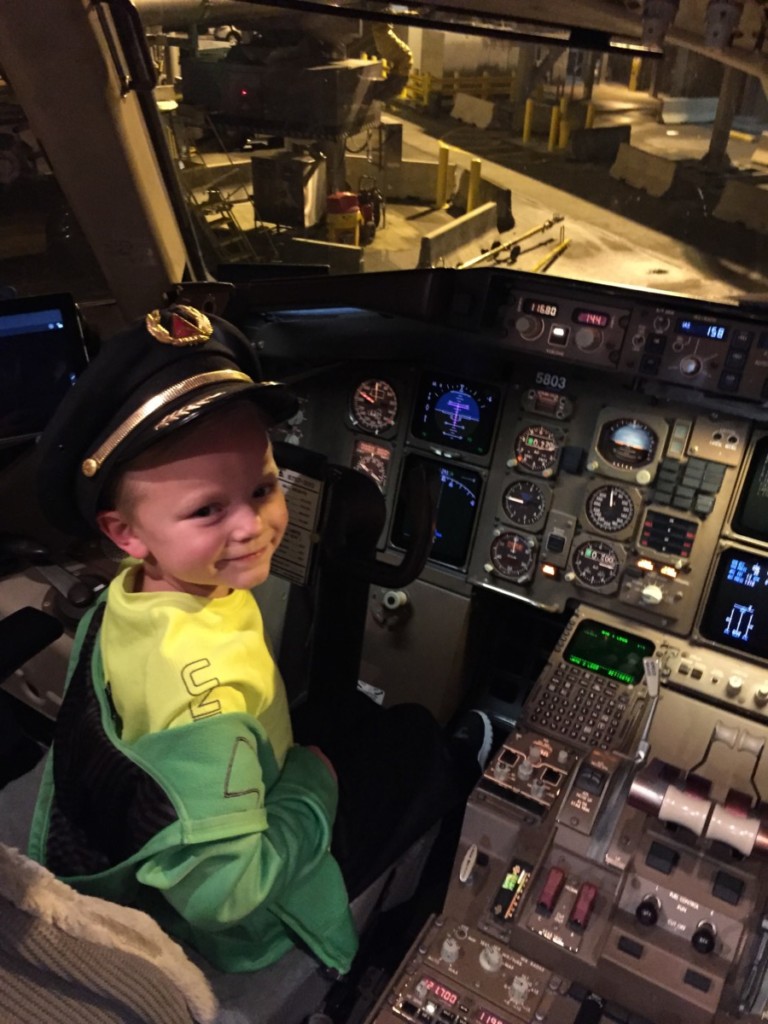
As a father of four I have flown many times with my wife and children. Our very first flight was across country with our 3 year old. One of our first questions was, “Can a 3 year old sit in an airplane seat?”
Yes, a 3 year old can sit in an airplane seat. Children age 2 and under can ride on the lap of an adult without having to purchase an extra ticket for the child. Children 3 and older must have have their own seat on the plane.
Even though a 3 year old can sit in their own airplane seat, there is more information that you need to consider as a parent. Should your 3 year old sit in a car seat? Will my child’s car seat work on an airplane? How do you get a car seat on an airplane?
Should My 3 Year Old Sit In A Car Seat?
There is no requirement to have your 3 year old sit in a car seat during flight. However, the Federal Aviation Administration (FAA) strongly urges you to secure your child in an approved child restraint system (CRS). The choice to use a CRS for your 3 year old is really up to you as their parent.
The risk of getting injured on an airplane during flight is really low. However, there are still risks of getting injured during flight. The main risk is encountering moderate to extreme turbulence in flight. The aeronautical information manual (AIM) defines severe turbulence as, “Occupants are forced violently against seat belts or shoulder straps. Unsecured objects are tossed about. Food Service and walking are impossible.”
On the rare occasion that severe turbulence is encountered, it would definitely be beneficial to have your child restrained in an approved CRS system versus the provided lap belt. Other risks during air travel could be an aborted take off, or an accident happening during flight such as engine failure. Here is an account of a retired United Airlines flight attendant that experienced engine failure on a flight in 1989. In the statement she advocated the need for CRS systems to be required aboard aircraft.
On all of the research I’ve done on this topic, I’ve concluded that pilots and flight attendants seem to advocate the need for CRS systems aboard aircraft. The FAA doesn’t require the use of CRS systems, but urges parents to use them during flight. The choice is still up to you as the parent.
On all of the flights I’ve been on with my children I haven’t used a CRS system. I have even been the parent that holds my child on my lap to prevent having to buy an additional ticket. After researching the topic further, the next flight I take with my children I will use a CRS for the flight.
Will My Child’s Car Seat Work On An Airplane?
To determine if your child’s car seat will work on an airplane all you need to do is look for a label that has, “This restraint is certified for use in motor vehicles and aircraft” printed on it. If your car seat doesn’t have this information then you will be asked to check the car seat as baggage. Booster seats and harness vests are not approved for take-off and landing. These types of restraints will also be checked as baggage.
The only approved harness-type restraint for air travel is the CARES Child Safety Device. In order to use this restraint your child must weigh between 22 and 44 pounds. It should have, “FAA Approved in Accordance with 14CFR 21.305(d), Approved for Aircraft Use Only” printed on it.
The CARES system is the way I would go for my child. It is lightweight, can easily be stored in a carry on, and is a safe way to go for your child. I don’t know about you but the idea of trying to get my 3 year old, our carry-on luggage, and a clunky car seat through the airport is a nightmare. The CARES system can be purchased for a reasonable price on Amazon here.
How Do You Get A Car Seat On An Airplane?
If you decide to take your car seat on the airplane then you will want to check on the airlines website for their seat dimensions. As a general rule, if your car seat is wider than 16 inches, contact the airline prior to your flight to verify that lifting the armrest will give you enough room for the car seat. The FAA does require in InFO 15013 that no airline may prohibit a child from using an approved CRS when a seat is purchased for a child, the child is accompanied by a parent or guardian, and the child is within the weight limits for the CRS.
“If an approved CRS, for which the ticket has been purchased does not fit in a particular seat on the aircraft, it is the responsibility of the aircraft operator to accommodate the CRS in another seat in the same service.” This could mean moving to a seat with moveable armrests, or moving to a seat with more room for rear facing car seats. Basically, it is the responsibility of the airline to find you a seat in the same class as long as you have purchased a ticket for your child and the CRS is approved for flight.
The FAA also recommends arranging with your airline to help you if you need to make connecting flights. That way you won’t have to haul everything including the bulky CRS all by yourself. Here is a list of tips from the FAA for flying with children. I recommend printing this out and going through it prior to your trip to ensure you have happy travels.
